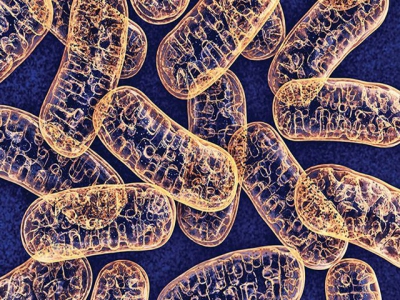Improve broiler feed efficiency with antioxidative capacity

In antibiotic-free production, aim for improving broilers’ anti-oxidative capacity to improve feed efficiency.
Better mitochondrial function, including less mitochondrial reactive oxygen species (ROS) production and less protein oxidation, influences higher feed efficiency in broilers. | Photo by wir0man, iStock
Reducing antibiotic growth promoters in animal feed calls for the development of new strategies to improve feed efficiency (FE) in poultry production systems. This represents unique opportunities to explore the biochemical and physiological sources of inter-animal variations associated with FE. Research has demonstrated a genetic link between higher feed efficiency and less mitochondrial reactive oxygen species (ROS) production at the cellular level in broilers. In addition, recent studies indicate a positive relationship between increased anti-oxidative capacity in broilers induced by certain plant extracts in feed and improved feed conversion rate (FCR).
There are several ways to assess feed efficiency. The most widely used are FCR and residual feed intake (RFI). FCR is defined as the amount of feed consumed per unit of weight gain. RFI is defined as the difference between actual and predicted feed intake based on the regression of requirements for weight gain and body weight maintenance.
The financial benefits of improved feed efficiency in poultry production are clear, particularly with rising feed costs. However, it can also have a positive impact on the environment. As feed efficiency improves, the amount of waste products decreases, which lowers emissions.
Feed efficiency has been heavily weighted in breeding objectives for meat-producing poultry for more than 40 years and, as a result, major gains have been made. More recent investigations by a poultry science group from the University of Arkansas provide a picture of the basis of feed efficiency at the cellular level. Oxidative stress turned out to be a cellular activity affecting feed efficiency.
The studies showed that animals with higher feed efficiency had better mitochondrial function that included less mitochondrial ROS production and less oxidation of proteins. Although feed intake was not different between low and high FE broilers, high FE broilers gained more weight and feed conversion ratios were significantly different between high and low FE groups. The level of protein carbonyl, an indicator of protein oxidation, was higher in mitochondria isolated from breast muscle of low FE compared with high FE broilers, which indicated higher oxidative stress in low FE birds.
About Author: Dr. Gwendolyn Jones is the head of product management and communications with Anco Animal Nutrition Competence GmbH. Jones holds a MBA from the University of Iowa and Ph.D. in animal science.
Có thể bạn quan tâm
 Whole grains in broiler diets may boost feed efficiency
Whole grains in broiler diets may boost feed efficiency Including whole grains in broiler diets can increase the efficiency of meat production and offer feed cost savings
 Are broiler feed prestarters worth the cost?
Are broiler feed prestarters worth the cost? Once poultry processors start making more money and nationwide production goes up, growth in the poultry industry should really take off.
 Study: Whole grains improve broiler feed efficiency
Study: Whole grains improve broiler feed efficiency Research from Australia reveals that replacing some ground grain with whole grain leads to better poultry yields